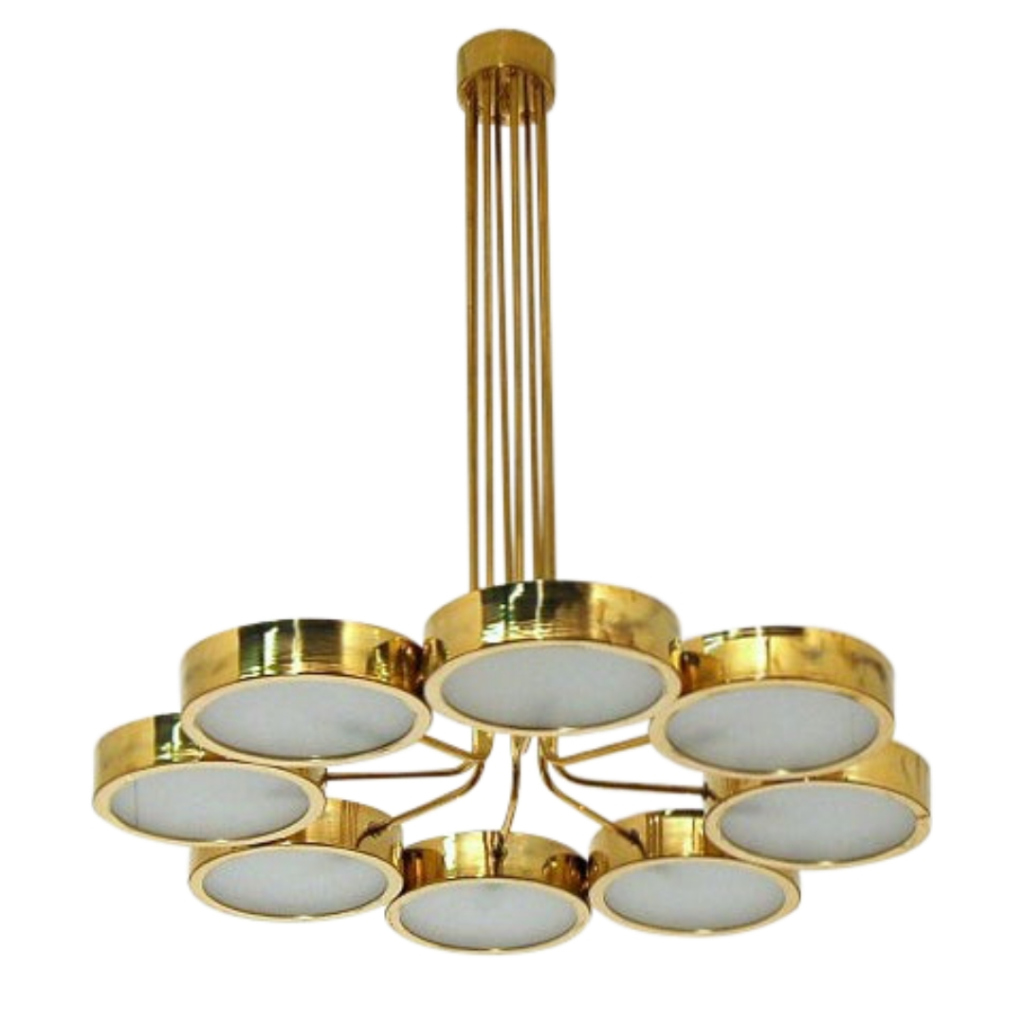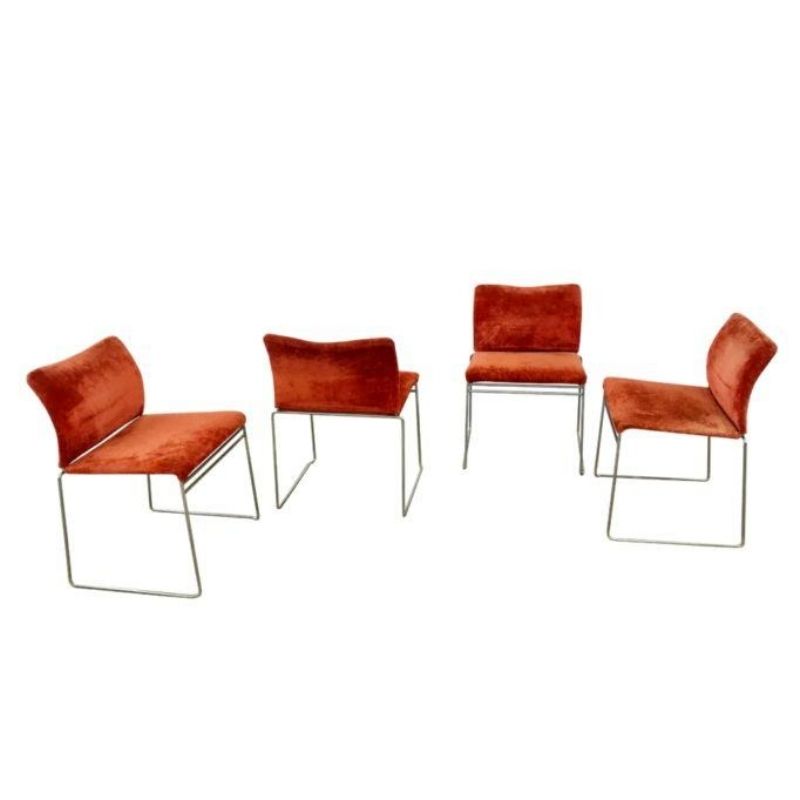Koen asked, "Why?"
Why do we reject old designs, or copy them, rather than build off of them? Why don't we accumulate design knowledge about a coffee pot rather than turn our backs on old pots?
Or to put it another way, why can't designs build on themselves the way scientific theories do?
I was provoked on many levels by these questions--always a good sign that the man from Antwerp has been doing some serious thinking.
Here's what I came up with.
1A. The science of our time forces us to live in a quantum age, where everything is possible, outcomes are probabilities shaped by observation and interventions, rather than by religious or scientific determinisms, and truth is ultimately a statistical concept, which can rarely be validly quantified at the level of everyday life.
1B. As a result of the above, even science itself has turned to the age of the algorithm. The algorithm is a model of how things might be simulated, not an irrefutable, inductive empirical fact (or theory), or an irrefutable religious commandment handed down from god via some priests. The algorithm is our best guess about what might be going on, or our best guess as to how something might be done. When you plug in the data we have collected, and turn the crank in the formal expression of the algorithm, you get a useful answer--not the truth.
pt 2
1C. When there is no truth, only possibility and probable outcomes, human activity appears to cease to have an accruing relationship with its past work. In this quantum world view, humans seem increasingly view the past through the lens of "that was then, this is now." The assumption seems to be that context, technology, skills, capital requirements, regulation, consumer taste and consumer buying power, change so much over even a short time, and are so situational, that whether one is designing superficially (putting a new skin on an old coffee pot mechanism) or designing deeply (designing the coffee pot mechanism and the skin), the temptation is to come up with the next new thing.
1D. Hence, the answer to "why" is rooted in a contemporary world view that has over the last century increasingly eclipsed the prior world views of religion and then inductive science, which both assumed and operated on, knowable facts and immutable laws that lead to recognizable systematic continuities over time that the current world view does not, and perhaps cannot, permit.
1E. The fallout of this current world view is that today we have little more in common with persons living in 1960 than 1860, or 1560. Under the sway of a quantum world view, every situation is unique and most design solutions have a brief temporal range of application.
3. It flows from the world view that individuals are increasingly going to value and desire unique design solutions from their own time. How can a coffee cup from the 1960s possibly perform as well, express me, as one utterly reinvented today? Technology is sooooooooooooooooo much more advanced today.There is in turn a de-emphasis on whether the coffee actually tastes better, because no one can remember what coffee tasted like in 1960.
4 In capitalism occurring under the institution of private property rights and patent law, there just is an incentive to search for the next great killer app. The margins for the next patentable killer app are big and protected.
5. To truly redesign an existing design by building off of it, you have to understand it. To truly understand it, you have to have some one who designed it explain to you how it was designed and what tradeoffs were considered during it design. How many designers are still around at the same firm they were when they designed the toaster in 1980? Probably none. Hence, there is no continuity of personel and knowledge within companies that would be required to make building on old designs significantly efficient.
Those are my thoughts so far.
You make as always a lot of...
You make as always a lot of excellent arguments, dc, but I wonder if your premise might in part be wrong, or at least not as precise as it could be.
The easy answer - probably found readily enough in your thorough extrapolation - is that such endeavors are part and parcel the human condition. Or, on a related note, money is the root of all evil.
But back to the premise. Can anyone really reinvent the wheel any more, or are we just changing out the tires from time to time?
[In every
ecology there are species which spew enormous quantities of seeds, with the expectation that some number of them will find fertile ground. Perhaps Mr Wilson is such a specimen ? His poetic/theoretical musings are the raw material from which some concrete truths will hopefully be gained ?]
dare i say "huh?"
i must admit, i feel a bit like tom hanks in his movie "big" as he sat in on his first conference-room meeting full of suits at the close of what was supposedly a profound, cutting-edge presentation. when asked for his response, he simply stated, "i don't get it."
that's in line with a piece of wisdom i encountered a while back related to discovery and creativity: "aim to be the dumbest person in the room." i guess that's what's happening to me right now without even trying. i'm more than a little self-conscious to admit that, but it could be that i'm in safe company. i sure hope so.
anyway, in my quest for summary and brevity, i attempted to read dcw's post through the timeless lenses of form and function, space and surface. taking the coffee cup example, it's being asked to do basic the same thing as it was back in 1960, and most likely 1860: namely, deliver a consumable amount of warm beverage to the lips of the drinker.
that basic objective can take multiple forms, some of which are rightly deemed more successful than others, some more pleasing, some more convenient. it can be functionally developed and refined to include other concerns [heat retention, spill resistance, ergonomic comfort, etc.], but the basic idea remains constant.
to imply that a given cup design is inherently flawed because it contains no [functional?] improvement over its predecessors is in itself -- i respectfully submit -- an improper view of design. the intent of such a designer could simply be one of engaging in the process of creativity and human production; the resulting artifact may not, in fact, deliver a more delicious nectar, but to the extent that it fulfilled the purpose of the designer, it has value.
i think i understand the point about what i would call design stagnation: are we really getting farther down the road, or are we just making the same road up to the same point look a little nicer?
more than anything right now, i suppose i'm again trying to ascertain exactly what is being sought in the original post. i do assume there is much there to be explored and mined, but i don't quite get it. though i'm fairly comfortable with the conceptual and abstract, perhaps i'm not too adept at dealing with propositions that appear more amorphous.
anyway, hopefully some gracious and patient replies may help to bring about the clarity i seek. thanks in advance...
Well, it's a
tricky and many-sided question, and I thank Koen for raising it and Mr Wilson for reviving and expanding the search for answers. (I agree that not every thought can be neatly condensed. If "brevity is the soul of wit" [Polonius, "Hamlet"], such brevity is not always sufficient unto the day [more Shakespeare ?]. . .)
To design or not to design -- that is the question. . .
May I start at the end....
...and follow kdc's lead and coffee cup exemple...
If I relate it to the coffee cup, my original question would be: Why is it that we can not build on aquired knowledge, in this case about drinking coffee. We happen to know quite a bit about drinking coffee. It requires a material that insulates heat properly. Serving hot coffee was the original thought behind using a coffee pot and serving rather small portions into a cup in which you would add sugar and cream according to taste...and pour small quantities in the saucer to cool it to drinkable temperature, and drink from the saucer. A number of things have changed since withh the result that the old cup and saucer has been replaced by more specialized vessels to hold lattes, espressos,capuchinos etc. The regular cup has more or less evolved to a mug. Of the mug we know that it should hold 300ml (a quantity that has been increasing over the years) we also know that dishwashers are build to hold 80 mm (3") diameter cups, so a "good" mug should have that diameter. We also know that the most comfortable and secure way of holding the mug is with two fingers and that the handle should be shaped in such a way that the fingers are not touching the hot surface...unless that surface is insulated in which case you do not need a handle. Ideally the handle should not be wider or bigger than that it fits into the square that you would trace around the circle...just in case you care about not wasting packaging. We also know that a small rim around the edge prevents most people from spilling coffee so that it runs down the outside surface of the mug. I could go on like this about restrictions in production etc. but I think that you get the point. My question was, why is it that in spite of this knowledge we prefer to ignore it in order not to be restricted in our so called creativity, and why is it that we willingly produce products that are substandard when it comes to applying that knowledge.
If we now go back to DCWilson and his idea of rejection of authority, I think that most of us, in reading my "rules" understand or at least feel that he is on the right track.
Koen's example makes my explanation concrete...
Dang, he's good. He's probably won lots of corporate battles for product designs just on this ability alone.
Now, let me see if I can clarify my conceptualization half as well as he concretized it.
We've had a world view change aka a paradigm shift in thinking.
We've moved from a religious world view, to an inductive scientific world view, and now to a quantum world view.
With the shift to the Quantum World View has come some consequences.
One of them seems to be discontinuities in authority and legacy, which are perhaps inevitable with shifts in world view.
More specifically, however, there seems to be a predisposition to break with the legacy past whether doing so is rational, or not. This may or may not be intrinisic to every world view shift, but it seems as strong tendancy in1 the Quantum World View shift.
This Quantum World View shift alters the way we view all manner of activities in relation to their legacies, or perhaps more accurately the way we increasingly view activities as divorced from their legacies.
Back to design, designers seem increasingly unwilling to build on the past, i.e., they seem increasingly to have significant amnesia about what has worked in the past and instead maximize the uniqueness and importance and auteur-istic nature of their work in the present.
The problem is that in design, anyway, those that do not remember the past are NOT doomed to repeat it. Rather they are doomed to reinvent it without the rational benefits of accrued knowledge about such artifacts.
The effect is knowledge waste, to coin a term and the result is design inefficiency, or design that is not as good as it could be if designers just remembered and built on what has already been learned.
barrympls you went to a bette...
barrympls, you went to a better school than I did I bet, one that must have emphasized the development of critical thinking rather than simply honing an ability for memorization and pointing one toward getting a decent job.
Isn't this just another part of the human condition, dc? Our educational systems - and more certainly issues tied to the socioeconomic realities of any given society - do not really do much to prepare inidividuals to think critically. Even so, the wheel is there in most cases, isn't it, even if the tires don't have much tread.
I'm pretty certain, or maybe pretty certainly wrong Koen, that bad coffee cups can and will continue to be designed with and/or without drawing upon a vast body of previous coffee cup knowledge (I don't doubt an empircal value). Can we, though, really design a coffee cup that will be much better than the best we currently have? And should we worry too much about this in anything other than the sense that this example can be applied/analogous to objects that might have a greater relevance or importance to our lives on this planet? I'm aware of the coffee cup I think as it might relate to the big picture. But I don't know otherwise - I'm just asking?
On the other hand, it seems to me, in general, that there will probably always be a disconnect inherent to design - that disconnect often being fueled in many cases by the disposition of humanity, by societies, by what humans determine, at any given moment, to be most important or by what they assign to have the greatest worth.
It's kind of an odd prospect, don't you think, yet understandable, that even as we go to the moon we are still ripping open bags of Doritos with our teeth, the green implications alone of either endeavor notwithstanding.
What I'm trying to say I guess is that it's winter here in Nebraska, and lately I'm really wanting something - other than a garage or a scraper - for the ice I'm always finding on my windshield, even though I'm hearing we are polluting our way to a natural solution to the icescraping problem. So I also want a new car, you know. One that isn't a car.
Just off the
top of my head: if you could score a cheap supply of cling wrap, you could apply some to your windshield on nights when frost is forecast -- and just peel it off in the morning ? Maybe heavy-duty reusable plastic film ?
There's something to be said for living WITH, rather than defeating, nature ? A cold bedroom and warm bedclothes may be healthier, and is certainly cheaper, than the alternative ?
Knowledge Waste is a valid issue, it seems to me. Architects are known for preferring fresh design over re-use of previous models; try to get even an avowed Wright fan to consider building one of his designs rather than starting from scratch every time. "Each building is the unique result of a unique program and site" is the usual line. (Of course, Taliesin "owns" Wright's designs and has stated that they intend to defend their copyright.) But isn't it the motive of all artists and designers to "have a new baby" rather than adopting ?
If you need any help, please contact us at – info@designaddict.com









